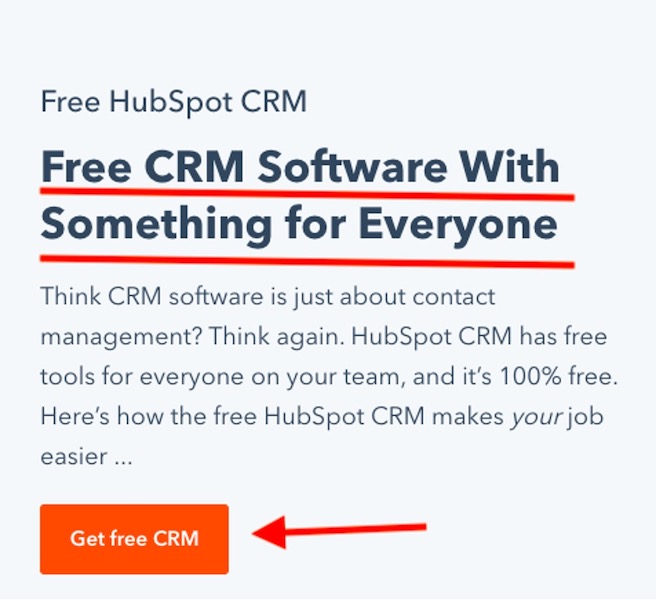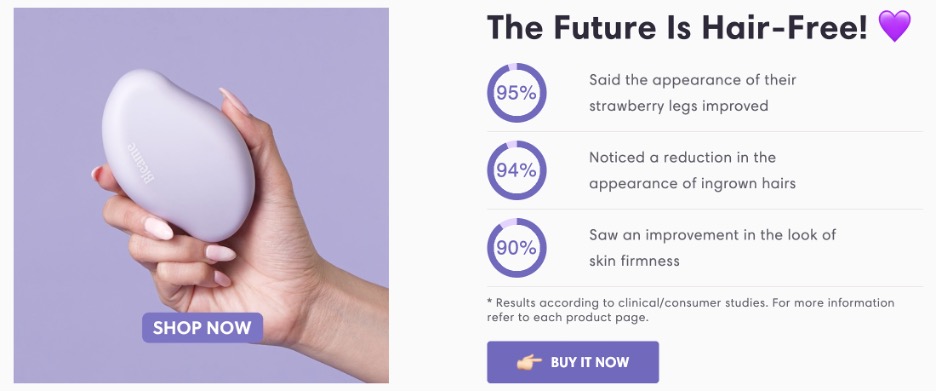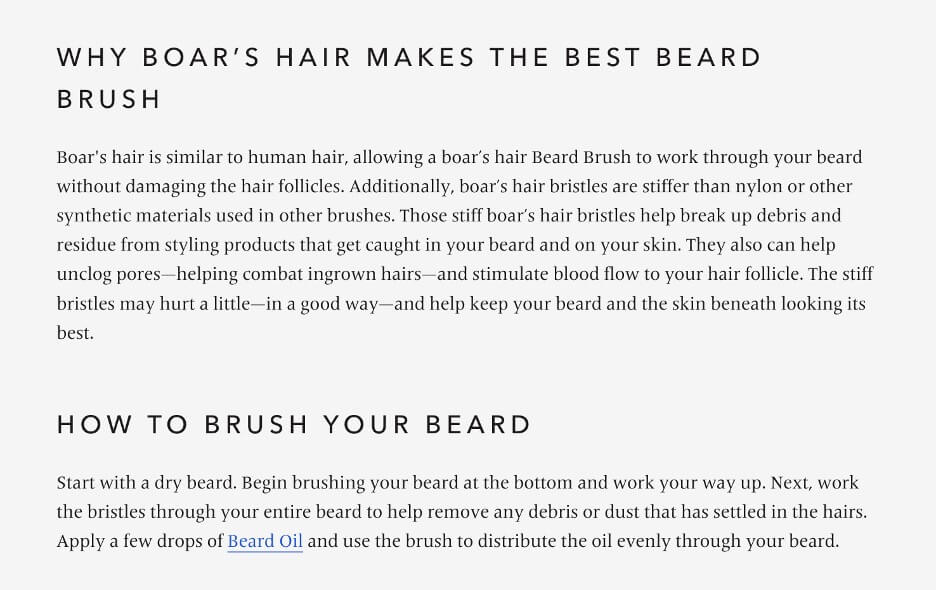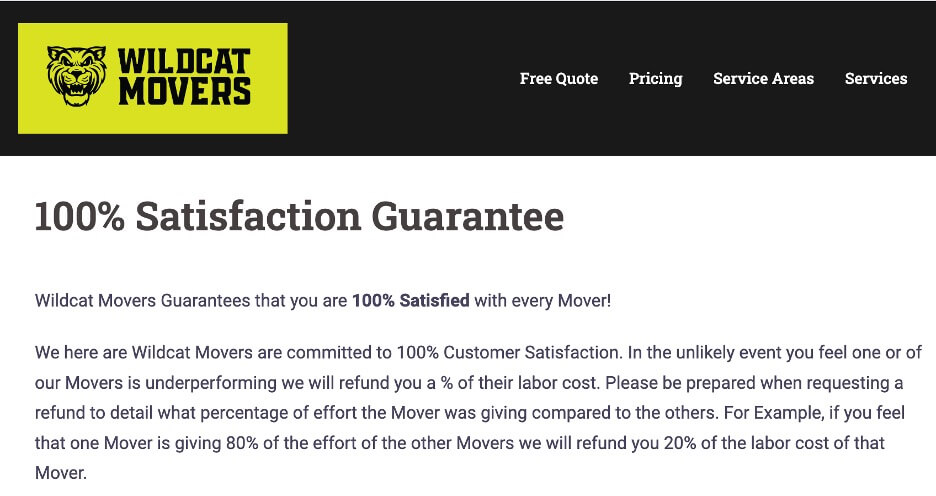Copywriting is just as much an art as it is a science—balancing psychology and data to call readers to action and encourage them to purchase, download, convert, and more.
Direct response copywriting is a helpful marketing copywriting tactic that encourages readers to respond or take immediate action. Which is what you want when it comes to writing any type of marketing copy—from ads to blogs to social posts.

What you want people to do after they see your marketing message
In this guide, we’ll discover the formula for effective direct response copywriting and unpack:
- What direct response copywriting is
- How to master direct response copywriting
- Real-life examples of direct response copywriting at work
Let’s get started!
What is direct response copywriting?
Direct response copywriting aims to elicit an immediate response from a reader.
Using a combination of persuasive or educational copy, clear and direct calls-to-action, helpful images, and thoughtful layouts, direct response copy conveys a message that targets your readers’ motives and emotions.
The “response” in direct response copywriting can refer to:
- Clicking the call-to-action (CTA) button
- Making a purchase
- Signing up for an email list
- Calling a phone number
- Filling out a form
- …or any other goal you may have for your business.
Direct response copywriting differs from traditional advertising as the latter encourages delayed activity, e.g., you might see an ad in a magazine or on TV and make a note to visit the website later.
Direct response copywriting encourage action now.
7 best practices for direct response copywriting
While direct response copy can vary between industries and audiences, it often is composed of the same strategic approach.
Below, we cover seven best practices to help you build your direct response copywriting strategy and approach it with confidence.
1. Write for your audience
The first step in effective direct response copywriting is deciding what you’re selling, who you’re selling to, and why they’d want it. Answering these questions will help you create a compelling hook for your copy to lure readers in and convince them to take action.
Related: Unsure who you’re targeting? Take a look at our target market examples for inspiration.
If you’re struggling to develop the hook, consider whether your offering has any unique qualities or features. What sets it apart from similar products or services? What have previous customers said about the product or service that can help potential buyers relate?
For example, if your product solves a problem shared by most of your audience, then this problem (and its solution) is worth highlighting in the copy.
Let’s say you’re writing direct response copy for a new pair of wireless headphones and are targeting athletes. If so, your product will likely appeal more to someone who values mobility and a long-lasting battery.
However, if you’re targeting office workers, it would make more sense to highlight noise-canceling capabilities and comfort over in-ear headphones.
Your copy is the place to call out these features and benefits, especially as they relate to your audience.
Take a look at this value proposition by HubSpot:

HubSpot talks directly to its target audience (something for everyone) and entices them with the free offer (free CRM software). The CTA drives home the point with the clear ask of “Get free CRM.”
Related: Get 50 powerful call-to-action phrases to include in your direct response copywriting.
2. Craft a standout headline
Your headline is the most important part of your direct response copywriting. In fact, eight out of every 10 people will read headline copy, but only two out of 10 will read the rest.
If you don’t open with an attention-getting headline, don’t count on people reading the rest of your direct response copy.
Start writing your headline by listing two or three benefits associated with your product or service. Then, create another list of the pain points addressed by your product or service.
Finally, choose one benefit and one pain point that would appeal most to your target audience and work them into a headline. Your headline might be shorter than the rest of your copy, but it should take almost as much time to create. Don’t rush the process.
Here are some tips on how to write attention-grabbing headlines that make readers crave more:
- Open with a question such as “Are you struggling with credit card debt?” or “Are your sales taking a nosedive?” If your reader answers with a resounding “Yes!” they’ll feel understood and want to read the rest
- Be specific and clear about what your message is about and why visitors should read on
- Promise a benefit. What problem will your product or service solve? Will they save money, get healthier, or feel better? How will they feel after they’ve read the copy?
- Use data. Numbers make claims more concrete and believable
- Play on emotions, as emotions cause people to act. Anger, sadness, hope, and joy are all good emotions for driving action and developing a sense of urgency in your audience
- Use an active voice. Passive voice slows down writing and makes your headline seem dull and flat
- Don’t give everything away in your headline. You can answer questions or explain benefits, but don’t go into detail yet
- Tell the truth. The quickest way to lose the trust and respect of your audience is to reel them in and fail to deliver—both in your copywriting and products
Take a look at this headline by Bleame:

The team used concrete numbers to quantify benefits. Backing up your claims with facts helps your target audience feel assured that you’ll deliver on your promises.
This headline tells potential customers exactly what they can expect from your product and piques their interest with a big promise.
Related: Want to see more headline examples? WordStream has you covered!
3. Address fears and doubts
When people are uncertain, they’ll shy away from buying. By addressing your audience’s fears and questions in your copy, you build trust with your readers and help them feel more comfortable with making a purchase.
Here are some ways to use direct response copywriting to address your reader’s concerns:
- Address potential objections right away
- Add testimonials from happy customers. (We’ll address social proof and testimonials later on)
- Highlight benefits in your value proposition
- Build trust and authority by showing you’re an expert in your field. Consider plugging in data-driven results and accolades
- Include a money-back guarantee or free trial offer
In its direct response copywriting, Beardbrand creatively addresses its customers’ concerns about purchasing a more expensive brush. The team openly raised the issue themselves and thoughtfully responded to it. By doing so, not only do they assuage customers’ doubts, but they also make customers feel heard in their concerns.

By being upfront about the potential concerns customers have, Beardbrand creates a sense of trust and convinces customers that their product is worth the price.

Their product descriptions also come with a “Beardbrand Assurance” note to reassure customers that if they don’t like the product quality, Beardbrand will process a return or exchange.
4. Inject humor into your copy
Direct response copywriting is all about creating a trustworthy relationship with your readers—and one of the best ways to build a relationship is through humor. You don’t have to be a comedic genius to do that; it’s mostly about adding a touch of levity and wit.
To quote David Ogilvy, the maestro of copywriting and direct response marketing,
“The best ideas come as jokes. Make your thinking as funny as possible. You cannot bore people into buying your product. You can only interest them in buying it.”
Humor can be a tricky thing; if you get it wrong, it can work against you and push away your audience. The key is to use it in a way that makes sense for your audience and product. Ensure any comedic attempts fit your brand’s tone.
Thankfully, humor can take many forms. Add a pun or clever wordplay to your copy. Or go for subtlety by integrating language specific to your brand into the rest of the copy.
5. Tell a memorable story that explains your features and benefits
According to research by Stanford University, “stories are remembered up to 22 times more than facts alone.”
In other words, being persuasive isn’t just about facts—it’s about emotions as well. Direct response copywriting should make readers feel and act. The best copy elicits both at the same time. Telling a story appeals to a reader’s desires, and weaving in facts and features helps them achieve their goals and fulfill those desires.
When writing a story that engages and sells, include elements that resonate and relate with your audience.
What story should you tell? Write about why you began your business. Feature a real customer and share how your offering helped them solve an issue or face a challenge.
Take one of the oft-repeated copywriting examples, Harry’s brand story, for instance:

Harry’s is an e-commerce brand created by two friends tired of paying too much for razors and getting a mediocre shave. The duo discovered that many men are stressed when they have to spend too much money on overdesigned razors, so they created the budget line to give them a break on their purchases.
This backstory helps Harry’s connect with its consumers on a personal level—and demonstrate the quality of its products.
6. Use testimonials and social proof to let your customers sell for you
Research shows that over 90% of consumers are more likely to trust non-paid recommendations over any other kind of advertising—including your direct response copywriting. This doesn’t mean your copy is worthless, but testimonials and social proof can make it that much more powerful.
When you use social proof strategically, you’re that much more likely to incite action from your audience.
For example, if you’re positioning yourself as an authority or expert in your field, consider using testimonials from other authorities or experts to back up your claims and boost your credibility.
If you have the option, use testimonials that mention specific details such as how much money they made or how much time they saved by using your product.
Here are some tips for using testimonials and social proof:
- Use testimonials from people to whom your target audience can relate. Consider including the reviewer’s job title in their testimonial
- Offer quantitative evidence to support your claims
- Use case studies to provide a full account of your services
Consider this example of social proof by Parley’s PPM Plumbing & HVAC Contractors included on their homepage:

Parley’s social proof appears right after their value proposition. Customers can now trust what they have to say and read evidence of how the service has benefited other companies.
7. Provide a guarantee at the close of your copy
Direct response copywriting should make your readers feel confident in what they’re buying by offering a guarantee at the end.
A guarantee reassures readers that their purchase is safe and isn’t permanent. This leaves a good impression and pushes your readers to take action.
Choose a guarantee that’s relevant to what you’re selling or providing. For example, if you’re selling an online course, offer a refund period if customers decide the course isn’t a good fit. On the other hand, if you’re asking for visitors’ emails in exchange for a downloadable guide, provide an email privacy disclaimer so visitors feel safe sharing their information. Other guarantees include free trial periods, price matching, and satisfaction guarantees.
Take a look at Wildcat Movers. This business promises a satisfaction guarantee to make people feel secure about their purchase decision.

Not all products and services need a guarantee, but including one is an excellent way to increase confidence and conversions for your direct response copywriting.
Get started with direct response copywriting
Direct response copywriting is about building a trustworthy relationship with your audience. Without your audience at the center, your copywriting will fall short in relating, converting, and retaining your customers. While certain elements of direct response copywriting are universal, include the above best practices to uniquely appeal to your readers and customers.






